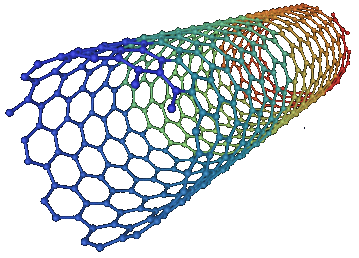
Carbon nanotubes (CNTs) are allotropes of carbon. Their strength and flexibility makes them useful in controlling other nanoscale structures, which suggests they will have an important role in nanotechnology engineering. They are also used in concrete where they increase the tensile strength, and halt crack propagation in elevators, bridges, circuits, magnets, transistors, and they are may also be useful as air pollution filter or water filter or even for hydrogen storage. Sept. 24 is the day in which U.S. scientists have captured the first optical images of carbon nanotubes inside a living organism. The scientists developed a near-infrared fluorescent imaging technology which detected nanotubes inside living fruit flies.
The study co-author Professor Bruce Weisman stated “Carbon nanotubes are much smaller than living cells and they give off fluorescent light in a way that researchers hope to harness to detect diseases earlier than currently possible,” and “In order to do that, we need to learn how to detect and monitor nanotubes inside living tissues, and we must also determine whether they pose any hazards to organisms.”
They have studied carbon nanotubes interacting with tissues of rabbits, mice and other animals but the first detection of nanotubes inside a living animal took place thanks to the fruit fly which is also called Drosophila melanogaster. It is the most studied and the most used model organism as it used in studies in genetics, physiology and life history evolution.









